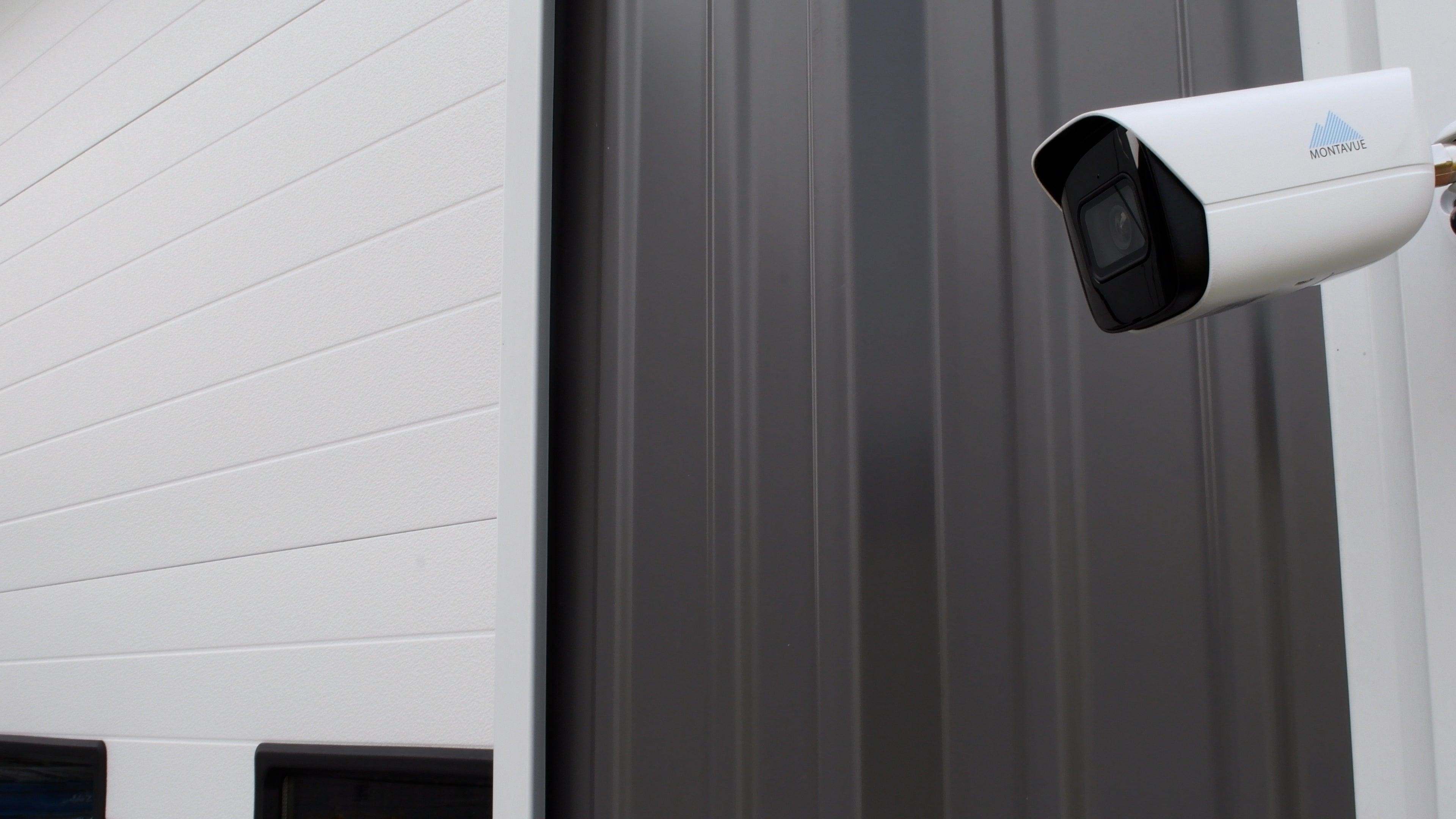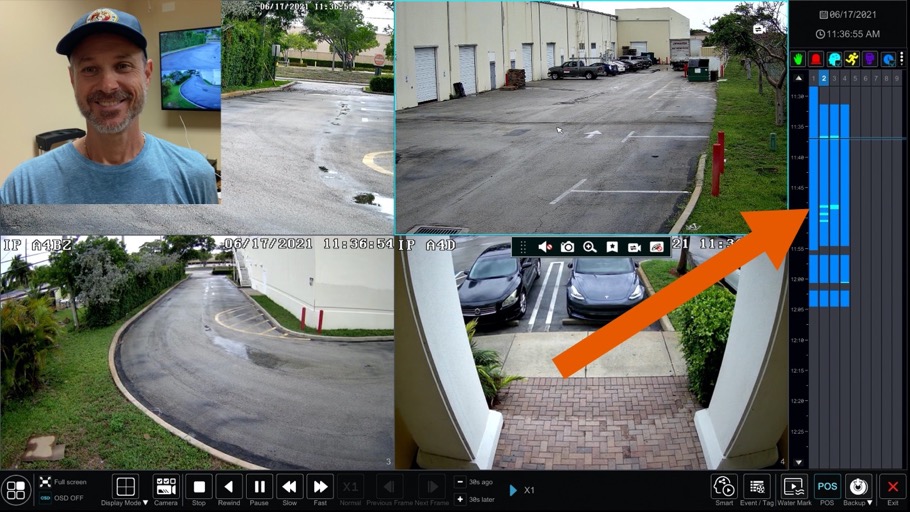Security cameras record by capturing video and storing it digitally. They use various technologies to ensure clear footage.
Security cameras play a crucial role in safeguarding homes and businesses. Understanding how they record helps in choosing the right system. These cameras capture video through lenses and sensors. The footage is then processed and stored in different formats. Storage can be on a local device or in the cloud.
Various features enhance recording quality. For instance, night vision or motion detection. Knowing these features aids in maximizing security. This blog will explore the recording process in detail. We’ll discuss the technology behind it. Also, we’ll cover the benefits of different recording methods. Stay with us to uncover how security cameras keep us safe.

Credit: montavue.com
Table of Contents
Types Of Security Cameras
Analog cameras are the oldest type of security cameras. They use cables to send video signals to recording devices. The video quality is not very clear. These cameras are often cheaper than other types. They are easy to install. They need a separate cable for power. Analog cameras work well for small spaces. They are not very advanced.
Digital cameras are more modern and advanced. They use networks to send video to computers. The video quality is very clear. These cameras can store more data. They are more expensive than analog cameras. Digital cameras can record for a long time. They are used in big places. They need good internet. They can do more things.
Components Of Security Cameras
The lens focuses light on the sensor. It helps capture images clearly. Different lenses offer different views. Wide-angle lenses show more area. Zoom lenses capture details far away.
The sensor turns light into electrical signals. There are two types: CCD and CMOS. CCD sensors produce high-quality images. CMOS sensors are cheaper and use less power. Sensors vary in size. Bigger sensors capture more light. This helps in low light.
The processing unit handles the data. It turns signals into video files. It compresses the files to save space. Some units can detect movement. They alert when something happens. Processing units also store video. They can save it locally or send it to the cloud.
Video Recording Technologies
Security cameras can record video all the time. This is called continuous recording. The camera never stops. It records day and night. This is useful for places needing constant watch. Stores and banks use this a lot. Continuous recording helps catch events. It does not miss anything. The camera stores video in a hard drive. This takes a lot of space. Sometimes, old video gets deleted to save new video.
Some cameras record only when they see movement. This is motion-activated recording. It saves space and power. The camera sleeps when nothing moves. It wakes up when movement happens. This is good for homes. It saves important video only. You don’t have to watch hours of nothing. The camera sends alerts when it records. This helps catch thieves or animals.

Credit: www.xlrsecurity.com
Data Storage Solutions
Security cameras can use local storage to keep videos. This means saving data on devices like SD cards or hard drives. SD cards are small and fit inside the camera. They can store many hours of video. Hard drives are bigger and store more data. They are often part of a system called DVR or NVR. These systems work without the internet. This keeps video data safe from online threats. Local storage is good if you need privacy. It’s also cheaper over time. But if a thief steals your device, you lose your data.
Some cameras use the cloud to save videos. This means data goes to the internet. You can watch videos from anywhere. You just need a device with internet access. Cloud storage keeps your data safe from theft. Even if the camera is broken, your videos are still there. But, cloud storage can cost money each month. It’s also important to have a good internet connection. This ensures smooth uploading and downloading. Cloud services often come with extra features. These include video sharing and motion alerts.
Video Compression Methods
Security cameras use codecs to compress video files. This helps save space. Common codecs are H.264 and H.265. These codecs make files smaller. Smaller files are easier to store and send. They keep the video quality high. This is very important for security.
Compression reduces file sizes. Smaller files mean less storage is needed. This saves money on storage devices. It also means less bandwidth is used. Bandwidth is the data amount sent over the internet. Less bandwidth means videos load faster. This is great for watching live footage.
Network Connectivity
Wired connections use cables to send data. They are very stable. These cables can be Ethernet or Coaxial. Ethernet cables are common in homes. Coaxial cables are used in older systems. Wired setups need physical installation. They often provide high-quality video. They are less prone to interference. The data travels directly through the cables. Security cameras often use these for reliable connections. Installation can be more time-consuming. Wired cameras don’t rely on Wi-Fi signals.
Wireless cameras use signals to send video. They connect via Wi-Fi. These setups are easy to install. No need for cables. Signal strength is very important. Distance can affect video quality. Interference might disrupt the signal. Walls can block signals. Wireless cameras are flexible. You can move them easily. They are popular for home use. Battery-powered ones are very mobile. Setup is faster than wired systems.
Privacy And Security Concerns
Security cameras keep our homes safe. But they also record personal moments. This raises privacy concerns. Data encryption is key. It protects your videos. Encryption turns data into a secret code. Only trusted people can read it. This keeps your videos safe from hackers. Without it, anyone could view your recordings.
Access control is another important part. It decides who can see the videos. With strong access control, only authorized users can view recordings. This stops strangers from seeing your private videos. Use passwords and keys to control access. They act like locks on a door. Only those with the right key can enter. It’s simple but very important.

Credit: videos.cctvcamerapros.com
Future Trends In Security Camera Technology
AI makes security cameras smarter. Cameras can now detect faces. They can also understand unusual movements. AI helps cameras learn fast. This makes them more effective.
Advanced analytics means cameras can do more. They can count people in a room. They can even recognize car license plates. This helps in tracking events better. Data is processed quickly. This ensures faster actions in emergencies.
Frequently Asked Questions
Do Security Cameras Record All The Time?
Most security cameras do not record constantly. They activate through motion detection or scheduled times. Continuous recording requires more storage and power. Check your camera model for specific features and settings. Always ensure proper setup for optimal security and data management.
How Do Security Cameras Record Video?
Security cameras capture video using lenses and image sensors. The footage is stored on DVRs, NVRs, or cloud servers. Sensors convert light into electronic signals. These signals are processed and saved digitally. Users can access recordings through connected devices or software applications, ensuring easy monitoring and playback of captured footage.
How Do You Tell If A Security Camera Is Recording You?
Check for a red or green light on the camera, indicating it’s recording. Listen for clicking sounds. Use a smartphone camera to detect infrared lights. Inspect for cables connected to a recording device. Review footage on connected screens to confirm active recording.
Do Cameras Only Record When Motion Is Detected?
Cameras can be set to record when motion is detected, but many also offer continuous recording. Motion detection saves storage space and battery life. Check your camera settings to choose your preferred recording mode.
Conclusion
Understanding how security cameras record is essential for safety. These cameras offer peace of mind. They capture moments, whether day or night. Settings can be adjusted for specific needs. Storage options vary, from cloud to local. Choosing the right system enhances protection.
Always ensure cameras are correctly positioned. Regular maintenance keeps them working well. Security cameras are a wise investment. They help deter crime and provide evidence. With this knowledge, you can make informed decisions. Stay secure, and let technology guard your space.